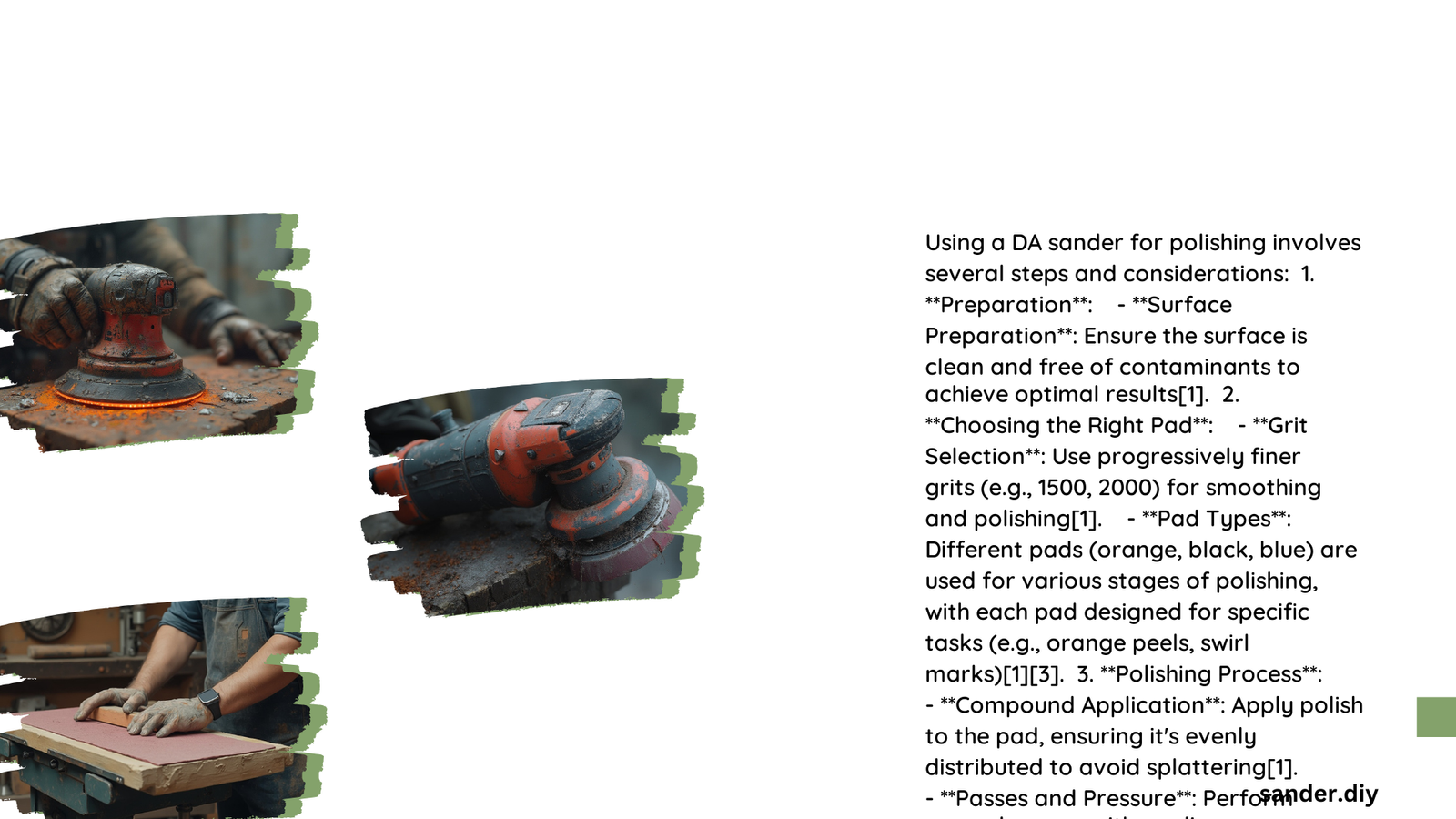Polishing surfaces with a dual-action (DA) sander requires precision, technique, and understanding of equipment dynamics. Professional detailers and craftsmen know that mastering a DA sander transforms rough surfaces into mirror-like finishes, whether working on automotive paint, wooden furniture, or metal surfaces. The key lies in selecting the right pads, maintaining consistent motion, and applying appropriate pressure to achieve exceptional results.
What Makes DA Sanders Unique for Polishing?
DA sanders differ from traditional sanders by providing a random orbital motion that prevents swirl marks and ensures even material removal. This unique movement makes them ideal for achieving high-gloss finishes across various surfaces.
How to Select the Right Polishing Pad?
| Pad Type | Best Used For | Recommended Speed Range |
|---|---|---|
| Wool Pads | Initial cutting and heavy correction | 1500-2500 RPM |
| Foam Pads | Fine polishing and finishing | 1000-1200 RPM |
| Microfiber Pads | Ultra-smooth final finish | 800-1000 RPM |
What Techniques Ensure Perfect Polishing?
Pressure and Movement Techniques
- Apply light to moderate pressure
- Maintain consistent, overlapping patterns
- Keep sander flat at 90-degree angles
- Move in smooth, controlled motions
Which Compounds Work Best?
- Water-Based Polishes
- Mirka Polarshine 10
- Environmentally friendly
- Minimal chemical hazards
-
Excellent for multiple surfaces
-
Automotive Polishing Compounds
- Meguiar’s Swirl Remover
- Specialized abrasive formulations
- Targeted scratch and imperfection removal
How to Manage DA Sander Speed?
Speed management is crucial for achieving desired results:
– Cutting Stage: 2000-2500 RPM
– Polishing Stage: 1500 RPM
– Finishing Stage: 1000-1200 RPM
Pro Tips for Flawless Polishing
- Always start with clean, dry surfaces
- Use fresh, clean pads for each stage
- Replace pads when they become saturated
- Work in small, manageable sections
- Use proper lighting to check progress
Common Mistakes to Avoid
- Applying excessive pressure
- Using incorrect pad for specific stage
- Neglecting surface preparation
- Inconsistent movement patterns
- Skipping intermediate polishing stages
Safety and Maintenance

- Wear protective eyewear
- Use dust extraction systems
- Clean sander after each use
- Inspect pads for wear and tear
- Store in a dry, clean environment
Equipment Recommendations
- Professional Grade: Rupes LHR15 Mark III
- Mid-Range: Griots Garage Boss G15
- Budget Option: Porter-Cable 7424XP
Final Surface Inspection
Use these methods to verify polishing quality:
– Bright light examination
– Reflection test
– Tactile surface check
– Microfiber cloth wipe-down
By understanding these comprehensive techniques for using a DA sander for polishing, you’ll transform rough surfaces into professional-grade, high-gloss finishes across various materials.
Reference:
– Mirka Polishing Guide
– Automotive Detailing Techniques
– Professional Woodworking Resources
